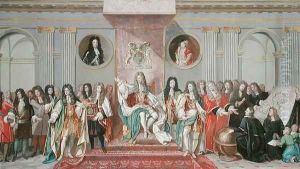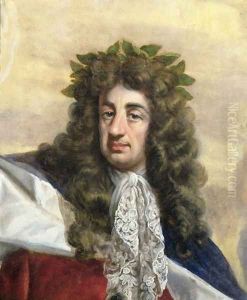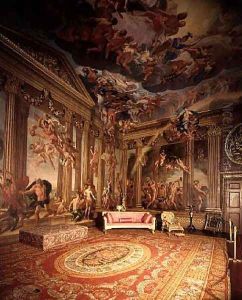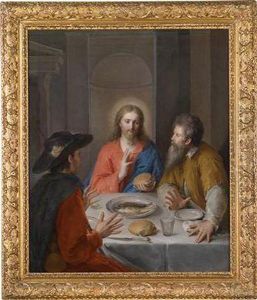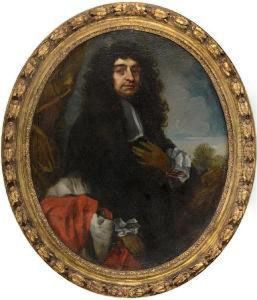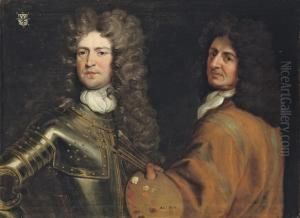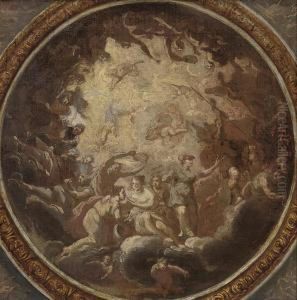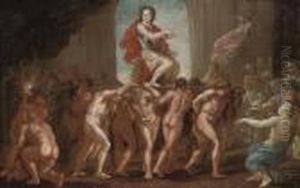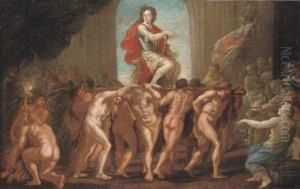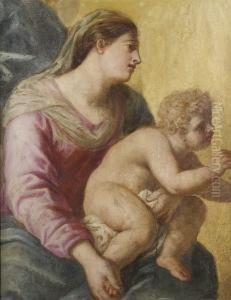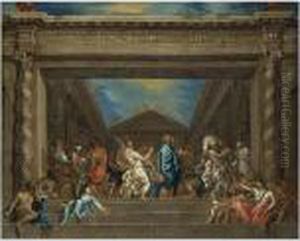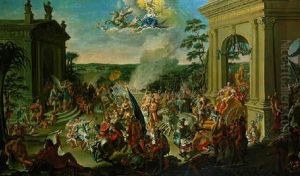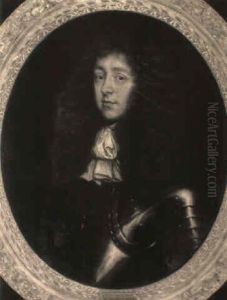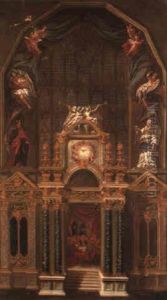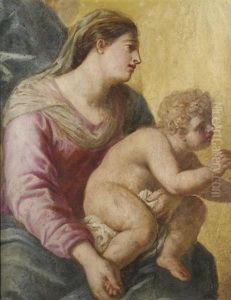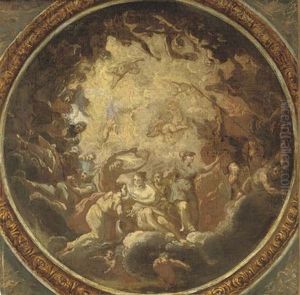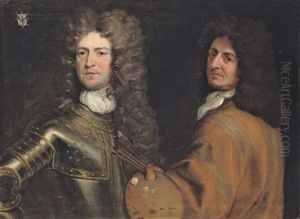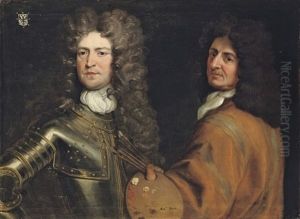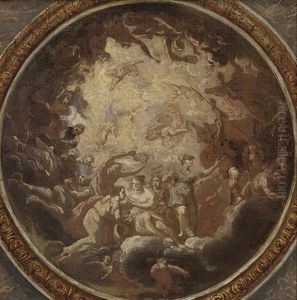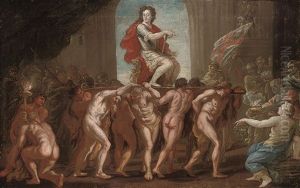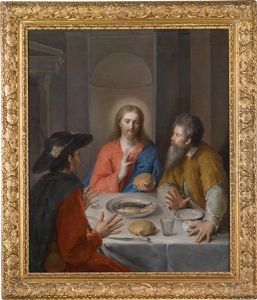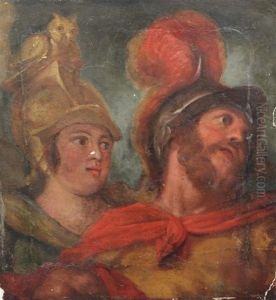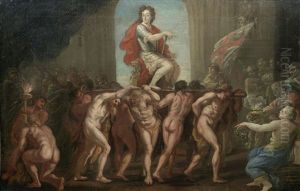Antonio Verrio Paintings
Antonio Verrio was an Italian Baroque painter who played a significant role in introducing the grandiose style of the Baroque mural into England. Born in 1636 in Lecce, in the then Kingdom of Naples, Verrio's early life and training remain somewhat obscure, though it is believed he was initially trained in Naples. His artistic journey took a pivotal turn when he moved to France, where he was influenced by the works of Charles Le Brun and the burgeoning French Baroque style.
In 1671, Verrio arrived in England, where he would leave a lasting mark on the English art scene. He was commissioned by Charles II to decorate several rooms in Windsor Castle, starting with the King's Staircase and expanding his work to include the Queen’s Staircase and the King’s Presence Chamber among others. These works were characterized by their vivid color, dynamic compositions, and incorporation of classical and allegorical themes, setting a new standard for mural painting in England.
Verrio's success at Windsor led to further commissions from British royalty and nobility, including work at Hampton Court Palace and the creation of the Painted Hall at Chatsworth House for the Duke of Devonshire. His style, while celebrated for its grandeur and complexity, also faced criticism for its perceived extravagance and the artist's sometimes contentious personality.
Despite the controversies, Verrio's influence was profound. He played a key role in the development of English Baroque painting, introducing a sense of drama and scale previously unseen in British art. His legacy continued after his death in 1707, inspiring a generation of artists, including James Thornhill, who would carry forward the Baroque tradition in England.
Towards the end of his career, Verrio converted to Anglicanism and was granted a pension by William III, a testament to his significant contributions to the cultural landscape of England. He spent his final years working on smaller projects and died in 1707, leaving behind a body of work that continues to be admired for its ambition, creativity, and influence on the development of English Baroque art.

